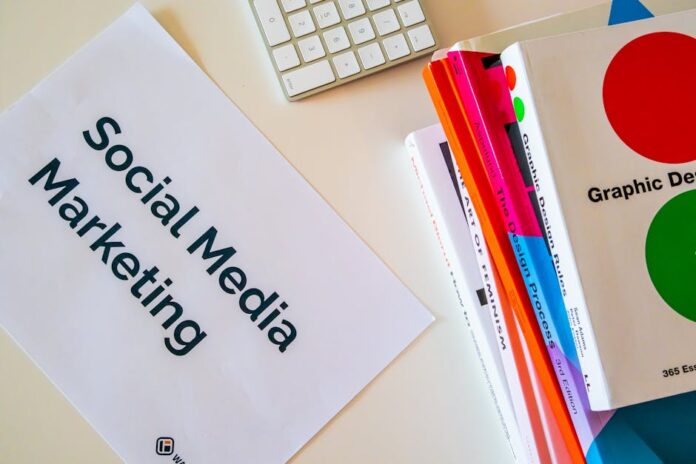Influencer marketing has become a popular method for brands to reach their target audiences effectively. Its evolution over the years has shown a dynamic adaptation to market needs. By 2025, this strategy appears to be more valuable than ever for companies looking to engage consumers authentically and creatively.
Current State of Influencer Marketing
The growth of the influencer marketing industry is a testament to its effectiveness. Projected to reach $24 billion by 2025, it continues to offer opportunities for brands to connect with audiences. With 84% of companies believing in its power to drive results, it’s no wonder that influencer marketing remains a staple in many marketing arsenals.
Instagram, a leading platform for influencer marketing, provides an average return of $4.12 for every dollar spent. This platform’s visual nature aligns well with influencer-generated content, making it more engaging than traditional brand-created content. It’s clear that when influencers create content, it resonates well, driving better interaction and brand visibility.
Trends Shaping Influencer Marketing in 2025
1. Rise of Micro and Nano-Influencers
As brands look for more authentic connections with their target audiences, micro and nano-influencers have gained prominence. These smaller influencers might have fewer followers, but their communities are highly engaged. With niche audiences that trust them, they offer a more personalized approach to marketing. Brands benefit from these partnerships by accessing loyal followings who value the influencer’s opinions.
2. Focus on Long-Term Partnerships
The shift from one-off promotions to long-term collaborations signifies a major trend in influencer marketing. Brands are recognizing the benefits of building meaningful relationships with influencers. Long-term partnerships foster authenticity, allowing influencers to truly understand the brand’s ethos and communicate it effectively. This approach leads to deeper engagement and trust from audiences who appreciate the ongoing narrative.
3. Integration of AI in Campaigns
Artificial intelligence is revolutionizing how brands manage and execute influencer campaigns. With over 60% of marketers planning to integrate AI, it’s becoming a crucial tool for influencer selection and campaign performance analysis. AI helps identify influencers whose audiences align with brand goals, optimizing content distribution for maximum impact. This technological aid ensures campaigns are both effective and efficient.
4. Emphasis on Measurable ROI
In an age where every dollar counts, brands are more focused than ever on quantifying their marketing efforts. Sophisticated analytics allow companies to track the success and reach of their influencer campaigns, providing clear and actionable metrics. This focus on measurable ROI helps brands understand the direct impact of their investments, guiding future marketing strategies.
5. Growth of Social Commerce
Social commerce is becoming an integral part of digital marketing strategies, with influencers playing a pivotal role. Platforms like Instagram and TikTok have introduced shopping features that allow users to make direct purchases. Influencers, trusted by their followers, help facilitate these transactions, driving sales and boosting brand revenues.
6. Diversification Across Platforms
While Instagram remains a popular choice for influencer marketing, brands are branching out to other platforms such as TikTok, YouTube, and even emerging networks. This diversification allows brands to tap into different audience segments, maximizing their reach and visibility. By utilizing multiple platforms, brands ensure they are seen across various touchpoints, enhancing their overall marketing effectiveness.
7. Increased Regulation and Transparency
As influencer marketing matures, the call for authenticity and transparency grows louder. With increased scrutiny, brands and influencers must ensure that partnerships are transparent and clearly disclosed. This push for openness builds trust with audiences who are more aware than ever of sponsored content and its implications.
Challenges and Considerations
Despite its benefits, influencer marketing faces several challenges that brands must consider. Oversaturation in certain niches has led to “influencer fatigue,” where audiences become desensitized to promotional content. Balancing hard metrics like engagement with soft KPIs such as brand alignment and authenticity remains a critical challenge. Furthermore, as consumers become savvier, their trust in influencer recommendations may wane, requiring brands to work harder at maintaining credibility.
Conclusion
Influencer marketing continues to prove its worth as a strategic component of modern advertising. By 2025, brands that adapt to changing trends and focus on authentic, measurable results will likely find success. As you navigate the evolving digital landscape, making thoughtful decisions about influencer partnerships can offer substantial rewards. For more insights on influencer marketing strategies and trends, visit our website at Startup Journal.
This holistic approach to influencer marketing, aligned with the latest trends and strategies, ensures its continued viability and value. By staying attuned to consumer needs and technological advancements, brands can harness the power of influencers to foster genuine connections and achieve meaningful marketing outcomes.
